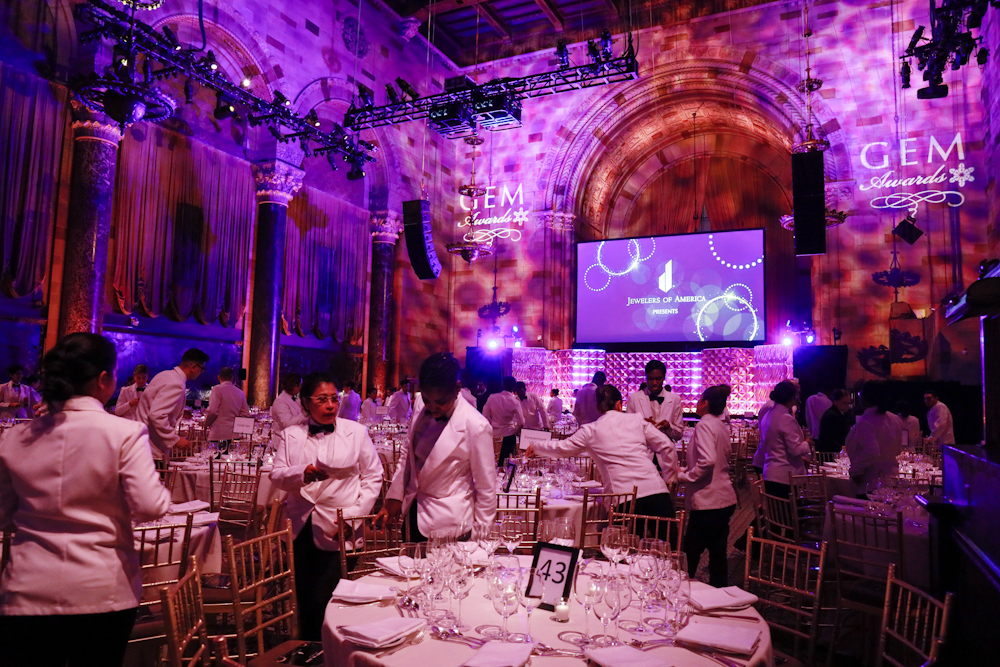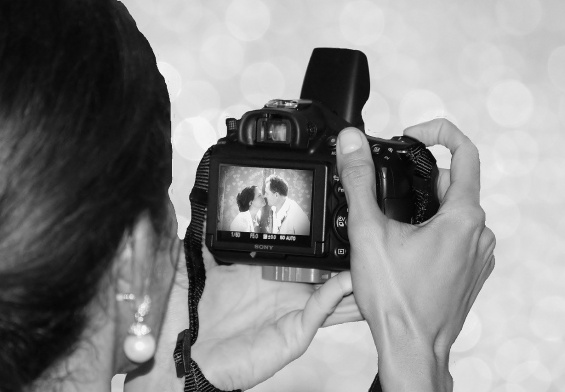In the digital age, technology has become a powerful force, driving changes and innovations in various industries. From the way we communicate and work to how we create and consume content, technology has reshaped our world. One field that has particularly felt the impact of these technological advancements is event photography.
Event photography, a specialized field that focuses on capturing moments and details of events such as weddings, corporate gatherings, and concerts, has traditionally been about capturing the essence of the event in a static frame. However, with the advent of new technologies, this field is undergoing a significant transformation.
Today, event photography is no longer just about taking pictures. It’s about creating an immersive, interactive experience for both the event attendees and those who will view the images later. It’s about leveraging technology to capture not just images, but emotions, stories, and experiences. It’s about pushing the boundaries of what’s possible and redefining the role of the photographer.
From virtual and hybrid events to augmented and virtual reality, from social media and live streaming to AI and drones, technology is introducing new possibilities and challenges in event photography. It enables photographers to experiment with new formats, reach a wider audience, and offer more value to their clients.
In this article, we will delve deeper into these technological advancements and explore how they are revolutionizing event photography. We will look at the benefits these changes bring to photographers, event planners, and attendees, and how they are enhancing the overall event experience. We will also look at some of the innovative ways photographers are leveraging these technologies to push creative boundaries and redefine what event photography can be.
Virtual and Hybrid Events: A New Frontier in Event Photography
The advent of technology has brought about a significant shift in the landscape of events. One of the most transformative changes has been the rise of virtual and hybrid events. These formats have emerged as viable alternatives to traditional in-person events, particularly in the wake of the COVID-19 pandemic.
Virtual events are conducted entirely online, eliminating geographical boundaries and allowing attendees from all over the world to participate. This global reach presents a unique opportunity for event photographers. They can now capture a diverse range of moments and interactions that were previously impossible in a physical setting. From virtual concerts to online conferences, photographers are finding innovative ways to visually document these digital experiences.
Hybrid events, on the other hand, combine the best of both worlds. They offer a mix of in-person and virtual experiences, catering to both attendees who can be physically present and those who prefer to participate remotely. This format poses an exciting challenge for photographers. They must seamlessly blend traditional photography techniques with new approaches suited for capturing virtual interactions. This could involve simultaneously shooting live action, while also screen capturing digital content, or coordinating with a remote team to ensure comprehensive coverage.
The rise of virtual and hybrid events has also led to cost savings in terms of venue, transportation, and accommodation. This could potentially allow for a larger budget allocation for event photography, opening up possibilities for more creative projects or the use of advanced photography equipment and software.
In essence, virtual and hybrid events are reshaping the field of event photography. They are pushing photographers to step out of their comfort zones, learn new skills, and embrace innovative approaches. While this new frontier poses its own set of challenges, it also offers unprecedented opportunities for those willing to adapt and innovate.
Event Management Software and Analytics: The Power of Data in Event Photography
In the era of digital transformation, data has become a valuable asset in various industries, and event photography is no exception. The integration of event management software and analytics tools into the event planning and execution process has revolutionized the way events are organized, managed, and even photographed.
Event management software offers a comprehensive solution for managing various aspects of an event, from registration and ticketing to marketing and attendee engagement. For photographers, this software can provide valuable insights that can guide their work. For instance, knowing the number of attendees, their demographics, and their preferences can help photographers plan their shots and focus on capturing the most relevant and impactful moments.
Moreover, these tools often come with analytics capabilities, providing real-time data on attendee behavior and engagement. This data can reveal patterns and trends that can inform decision-making. For example, if data shows that attendees are most engaged during certain parts of the event, photographers can prioritize these moments to ensure they are adequately captured. Similarly, if certain types of photos or posts are generating more engagement on social media, photographers can take note and produce more of such content.
Furthermore, the use of analytics extends beyond the duration of the event. Post-event analysis can provide feedback on the performance of the photographer. Metrics such as the number of photo views, shares, and likes can indicate the popularity and impact of the photos. This feedback can be invaluable for photographers, helping them understand what works and what doesn’t, and guiding their improvement and growth.
Augmented and Virtual Reality: Immersive Experiences in Event Photography
Augmented Reality (AR) and Virtual Reality (VR) are two groundbreaking technologies that are redefining the boundaries of event photography. By creating immersive and interactive experiences, they are transforming the way attendees engage with events and how photographers capture those moments.
Augmented Reality overlays digital content onto the real world, enhancing the user’s perception and interaction with their environment. In the context of event photography, AR can be used to create interactive photo opportunities. For instance, attendees could use their smartphones to scan AR markers, revealing 3D models, animations, or other digital content that they can interact with and photograph. This not only makes for unique and memorable photos but also adds an element of fun and engagement to the event.
Virtual Reality, on the other hand, transports users to a fully simulated environment. With VR, attendees can experience events from a completely different perspective. For photographers, VR offers a unique medium to showcase their work. They can create immersive photo galleries or virtual tours that allow viewers to explore the event as if they were there. This can be particularly useful for documenting large-scale events or venues, where traditional photos might not be able to capture the full scope and atmosphere.
Social Media and Live Streaming: Expanding the Reach of Event Photography
In the digital age, social media has become an integral part of our lives. It’s where we connect with friends, share experiences, and discover new content. For event photography, social media platforms offer a powerful medium to showcase work, engage with audiences, and expand reach.
Platforms like Instagram, Facebook, and Twitter allow photographers to share their event photos with a global audience. They can create buzz around their work, engage with followers, and even attract potential clients. Hashtags, geotags, and tagging can further increase the visibility of their posts, while features like stories allow for real-time sharing of event highlights.
Moreover, social media enables photographers to receive instant feedback on their work. Likes, comments, and shares can provide valuable insights into what types of photos resonate with audiences. This feedback can guide photographers in refining their style and approach.
Live streaming is another technology that’s transforming event photography. With live streaming, events can be broadcasted in real-time to audiences around the world. This not only extends the reach of the event but also offers a new medium for photographers to showcase their work.
Photographers can live stream their behind-the-scenes process, giving viewers a glimpse into what goes into capturing the perfect shot. They can also live stream the event itself, providing a real-time visual narrative that complements the static photos.
Furthermore, live streaming can open up opportunities for interactive event photography. Viewers can comment on the live stream, suggesting shots or angles they’d like to see. This interactive element can make the photography part of the event experience, engaging attendees and online viewers alike.
However, live streaming also presents its own set of challenges. Photographers need to ensure a stable and high-quality stream, which can require additional equipment and technical know-how. They also need to be adept at multitasking, as they’ll be managing the live stream while also capturing photos.
Innovations in Wedding Photography: Embracing the Future with Technology
Weddings are one of the most significant events in people’s lives, and capturing these moments through photography has always been a crucial part of the celebration. With the advent of new technologies, wedding photography is experiencing a wave of innovative changes that are enhancing the way these special moments are captured and remembered.
One of the key innovations in wedding photography is the use of Artificial Intelligence (AI) tools for photo editing. Tools like Imagen AI are helping photographers save significant amounts of time on backend work by editing photos in Lightroom, imitating their personal editing style. This not only increases productivity but also ensures consistency across all images, even under different lighting conditions.
Photobooths have been a popular feature at weddings, providing a fun and interactive experience for guests. However, traditional photobooths can be expensive and cumbersome to set up. Innovations like Gifyyy, a portable photobooth powered by an iPad, have made photobooths more accessible and easy to use. The Gifyyy iPad app can take photos, store them digitally, and manage branding, overlays, and event galleries, offering a modern twist to the traditional photobooth experience.
The use of robots to record or live stream weddings is another trend that’s gaining traction. While this may seem like a novelty, the idea of using a robot to capture the entire event without breaks presents a unique advantage. It ensures that no moment is missed and allows those who couldn’t attend the event in person to be a part of the celebration.
Live-wedding albums are an interesting innovation where companies offer to project the photos of the wedding onto the dance floor or the stage for the couple and guests to enjoy in real-time. This immediate sharing of photos adds an element of excitement and anticipation to the event.
For high-budget weddings, capturing the event in 360 degrees and allowing it to be enjoyed in virtual reality offers a surreal experience. This immersive approach to wedding photography has significant market potential, considering the growth and competition in the hardware technology sector.
The introduction of new and improved cameras like the Nikon Z6 II and Z7 II has elevated the quality of wedding films. These cameras enable wedding photographers to shoot wedding films that are not just amateur wedding videos but professional-grade films, complete with melodious music and editing.
The competition in wedding photography has also been fueled by platforms like Fiverr, Upwork, and Freelancer, where photographers can land work, and social media websites where they can showcase and promote their work at a minimal cost.
Lastly, the use of drones in wedding photography has increased over the last decade. Drones can capture the landscape and the mood of the venue from a bird’s eye perspective, providing unique and visually pleasing footage.
These technological innovations are not just enhancing the quality and variety of wedding photography but also making the event more engaging and memorable for the couple and the guests. As technology continues to evolve, we can expect to see more exciting innovations in wedding photography in the future.
Embracing the Future of Event Photography
As we navigate the digital age, it’s clear that technology is not just a tool but a catalyst for transformation. In the field of event photography, technology is reshaping traditional practices, introducing new possibilities, and setting new standards.
The rise of virtual and hybrid events has challenged photographers to adapt and innovate, capturing moments and experiences beyond physical boundaries. Event management software and analytics have empowered photographers with data, enabling them to make informed decisions and enhance the quality of their work. Augmented and Virtual Reality technologies have transformed the event experience, offering new mediums for creative expression and audience engagement. Social media and live streaming have expanded the reach and impact of event photography, connecting photographers with global audiences and making photography an integral part of the event experience. And in the realm of wedding photography, technological innovations are elevating the art, making the celebration more engaging, memorable, and visually pleasing.
However, with these advancements come new challenges. Photographers need to continuously learn and adapt, mastering new tools and techniques. They need to understand and navigate the digital landscape, from social media algorithms to virtual environments. They need to balance the demands of live streaming with the intricacies of capturing the perfect shot. And amidst all these, they need to stay true to the essence of photography – telling stories through images.
But these challenges are also opportunities – opportunities to grow, innovate, and redefine what event photography can be. As photographers embrace these opportunities, they are not just capturing the future of event photography; they are creating it.




